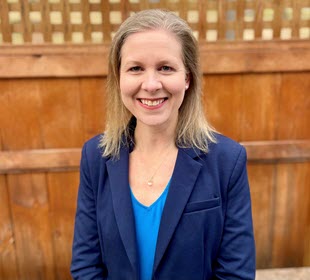At UnitedHealthcare, our mission is to help people live healthier lives and to make the health system work better for everyone. Committed to improving health outcomes for individuals with opioid use disorders (OUD), UnitedHealthcare has developed a sustainable process to integrate OUD screenings and treatment in hospital settings.
Opioid crisis and health disparities
In 2021, there were over 80,000 opioid overdose deaths in the United States, the highest number ever recorded. Since 1999, the increase of deaths caused by opioid overdose has been characterized by four waves with four distinct causes.1 Opioid-related deaths during the third wave have increased since 2013 largely due to the availability of synthetic opioids – most specifically illicitly manufactured fentanyl. More recently, the U.S. has moved into a fourth wave characterized by polysubstance use with the combination of opioids, predominately fentanyl, combined with other substances including stimulants like methamphetamine and cocaine, as well as the horse tranquilizer xylazine.2,3
Reports of rising mortality rates show that Black individuals are disproportionately affected.4 From 2015 to 2020, Black men had a 213% increase in opioid overdose deaths compared to the 69% increase for white men. Black women had a 144% increase in mortality rates over the same five-year period compared to the 35% increase for white women.
Disparities extend to rates of buprenorphine treatment as well. From 2019 to 2021, 42.7% of buprenorphine prescriptions were filled by white individuals while only 6.1% of prescriptions were filled by Black individuals.5 Research shows that Black patients have statistically significant lower odds of receiving buprenorphine prescriptions at health care appointments.6
Buprenorphine treatment for OUD cuts the risk of death by overdose in half. However, of the 200,000 UnitedHealthcare Medicaid members diagnosed with OUD, only 26% have evidence of treatment with a medication for opioid use disorder (MOUD). Approximately 46% of individuals with OUD have at least one hospital event per year, but most hospitals don’t universally screen for substance abuse disorders. Following identification of this care gap, UnitedHealthcare developed the Hospital MOUD Value-Based Care (VBC) and Toolkit program.
UnitedHealthcare Toolkit program and value-based care model
The program incentivizes and supports hospital providers to initiate universal OUD screenings and immediate/ongoing treatment. It provides hospitals with incentive payments to support a sustainable process to screen and treat patients living with OUD. The funding can be used for non-reimbursable services such as addiction navigation, electronic medical record updates and staff trainings. The Toolkit includes quarterly performance dashboards and configurable resources sharing best practices for OUD screening and treatment integration in hospital settings. This includes an Optum & American Society of Addiction Medicine MAT Emergency Department OUD course.
During the first year of the program, UnitedHealthcare meets with the hospital quarterly to discuss performance dashboard results with hospital teams and identifies opportunities for support. UnitedHealthcare is able to share insights in the data, resources for process improvement and assistance in locating in-network outpatient and telehealth providers for ongoing care. The dashboard displays the number of successful treatment initiations, missed treatment opportunities and health outcomes by racial group to monitor treatment initiation disparities.
Incentive payments are distributed when MOUD treatment induction occurs in the emergency room/inpatient setting or within three days of discharge. A second incentive payment is distributed when the patient fills their first prescription refill within seven to 14 days after discharge from the ER or inpatient setting, respectively. This payment confirms the patient has been connected to ongoing care.
Success and expansion
Since its launch in 2021, the program has been largely successful and continues to grow. It is now live in seven states and 33 hospitals. Since its initiation through June 2023, over 500 members have received treatment through a participating hospital. In an early analysis for the first two participating hospitals, members who have received treatment show a reduction in inpatient utilization and an increase in primary care contacts. This demonstrates the impact of MOUD treatment on improving health outcomes.
Hospital clinical champions indicated their appreciation for health disparity data, sharing they do not have access to this data outside of the program. One participating hospital commented, “We are so excited that UnitedHealthcare is bringing this to us. We haven’t heard of similar support for this work from any other payers.” Given the ongoing success and improvements in health outcomes for individuals with OUD, UnitedHealthcare will be expanding the program to include more than 50 additional hospitals across at least eight states.
UnitedHealthcare’s Toolkit program strives to improve OUD treatment access, reduce mortality rates and eliminate racial disparities in OUD treatment initiation and outcomes. By supporting hospitals in their efforts to integrate universal screenings and treatment, UnitedHealthcare is committed to closing the care gap for underserved individuals.
Sources
- Understanding the Opioid Overdose Epidemic | Opioids | CDC Opens in a new window
- The Rise of Illicit Fentanyls, Stimulants and the Fourth Wave of the Opioid Overdose Crisis - PMC (nih.gov) Opens in a new window
- Black men hit hardest by drug overdose deaths in recent years | Pew Research Center Opens in a new window
- Xylazine spreads across the US: A growing component of the increasingly synthetic and polysubstance overdose crisis - ScienceDirect Opens in a new window
- Racial and Ethnic Disparities in Buprenorphine and Extended-Release Naltrexone Filled Prescriptions During the COVID-19 Pandemic | Health Disparities | JAMA Network Open | JAMA Network Opens in a new window
- Buprenorphine Treatment Divide by Race/Ethnicity and Payment | Health Disparities | JAMA Psychiatry | JAMA Network Opens in a new window
